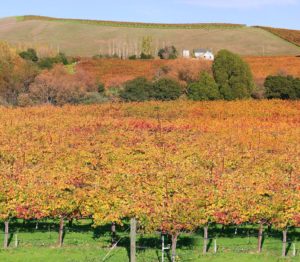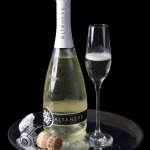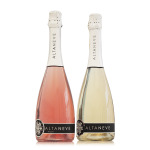Making a Dream Come True
Late last year a man by the name of Peter Marlin contacted me (not his real name for reasons I’ll explain in a moment). He told me he had read and enjoyed my book—already I like him a lot—and wanted my help in marketing a wine brand called Well Hung Vineyard. Now he really had my attention.
Peter has a full-time job as a business advisor, doing quite nicely, but his dream was always to go into the wine business. So, he bought a brand in Virginia, kept it under the radar, and set out to develop it until such time as he was ready to go at it full time.
It didn’t take very long for him to realize that part-time is no time to build a brand in the booze business.
How the Name Came About
As the story goes… There were three women in Virginia, all close friends, and they loved their late afternoon wine sessions. One of them owned a small farm that was just perfect for cultivating grapes and, over time, the vineyard grew and flourished.
One day, as the three ladies were touring this 2-acre vineyard, one of them grabbed hold of a cluster of grapes, laughed, and remarked, “girls, these grapes sure are well hung.” They had a good laugh. But, after a second or two, they looked at each other and had a eureka moment. A visit to a trademark attorney followed and a brand was born.
These grapes were made into wine at a local winery and sold each weekend at farmer’s markets, wine festivals, small retail outlets, and other venues around the state.
Over time, things began to change. One left for personal reasons and the others grew weary of running all over the state each weekend. It was time for them to move on. What began as a hobby—you might say a labor of love—was becoming difficult to manage.
So, reluctantly they began to investigate a sale of the small vineyard and, especially, the brand name.
Peter and His Dream
Eventually, through a friend of a friend—you know how that goes—Peter heard of the opportunity and negotiations began, were discontinued and back on again—you certainly know how that also goes. Finally, he bought the brand.
Peter, like most entrepreneurs, saw an opportunity for this brand to be bigger than it was and perhaps with a national footprint. His strategy was to continue to sell the wine locally, but also bought wine from producers and marketed them under the Well Hung Vineyard label.
From the website:
Founded in 2008 by three women who recognized the value of a good joke and a great glass of wine, Well Hung® Vineyard has a proud heritage and a bright future. Today, Well Hung® Vineyard is all about growth. Working with winegrowers across the country, we are able to source the best fruit to go into our up and coming wines.
An unexpected dividend cropped up. It turns out that the women who created the brand were savvy enough to also register the brand for clothing, nuts, and other items. And, these were and still are selling well.
Where do I Come in?
The call with Peter was candid. He saw great opportunities for his brand (and dream) but faced many obstacles—not least of which was the time and effort to build a brand and get the best wine available. In addition, despite the “I got to try this wine” attitude of consumers, finding distributors was more than just a challenge (see the previous article on LibDib), it was a major obstacle.
Peter wanted to enlist my aid in making his dream come true. As we talked a few things occurred to me.
First, in a cluttered wine market, name and packaging can cut through and quickly gain awareness in stores and on menus. In a world of Barefoot, Cupcake, Layer Cake, Little Black Dress, we also have provocative labels like Bitch, Fat Bastard, Old Fart, and more. The idea is to buy the first time because of the name/label and buy again because of the wine itself. Of the one billion wine gallons sold in the US, most are sold to non-maven and non-aficionado consumers who enjoy wine, the experience, and, yes, the label.
Come on… compared to the lame names cited above, you have to admit that “Well Hung” is amusing, a double entendre, a play on words, and a fun way to offer someone a glass of wine. A smile and a conversation are bound to follow.
Second, while I liked the idea of helping, this was more than I could handle in my consulting practice, even if I knew more than I do about the wine business. So, I needed a partner.
Enter Rob Warren
Rob and I knew each other well at Seagram and also worked together when he was with Diageo and I was an advisor to Jose Cuervo International, which they distributed at the time. We think alike and have lots of mutual respect. Besides, he has a great sense of humor and in between moments of marketing and brand building excellence, we laugh a lot.
It didn’t take Rob and I long to figure out that without money, resources, and the need for much time, building a wine business was more than just an uphill battle. Think Mount Everest. And so, the idea of licensing the name, Well Hung Vineyard, came readily to mind.
Peter was already selling wine from winegrowers around the country and it’s not a big leap to enter into a business arrangement with a company who initially can produce a red, white, and others. Eventually, varietals and vintage could be added to the mix. In the right hands and with the right wines, this brand could be a winner.
The clothing and other items under the WHV brand would only add to the allure.
~~~~~~~~~~~~~~~~~~
That’s where things stand at the moment—a search for a business partner interested in licensing the name. Stay tuned and I’ll let you know how things develop.
Oh, by the way, Peter also owns the trademark that should help with an Australian wine producer. It’s called Well Hung Down Under.
Disclaimer: While Rob is calling the shots, and taking the lead, I’m along for the ride. Hey, who says I can’t also have a dream or two?









